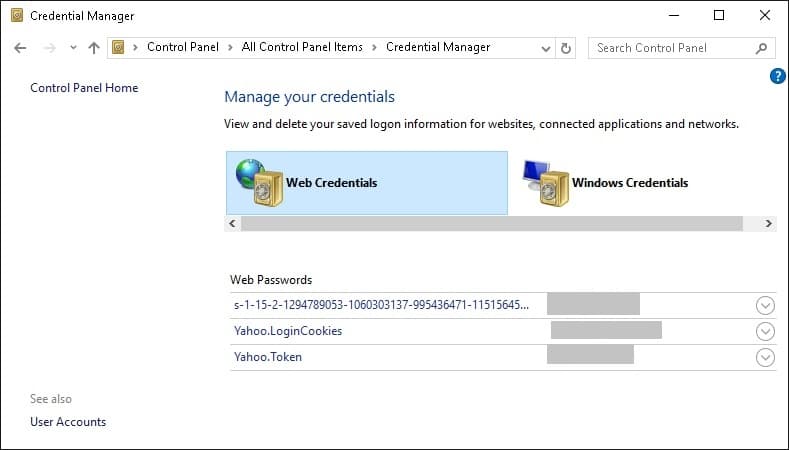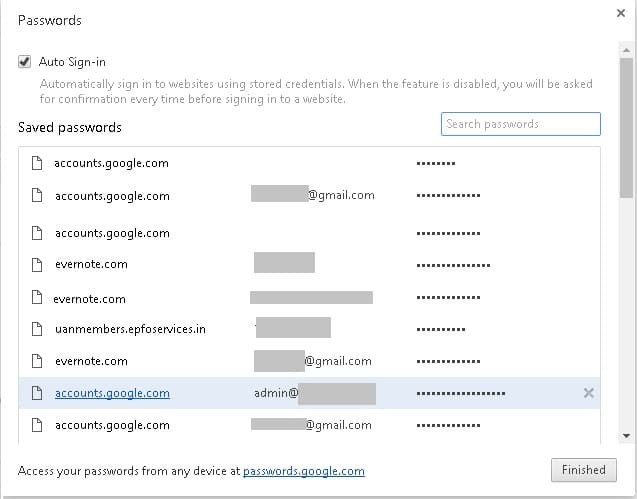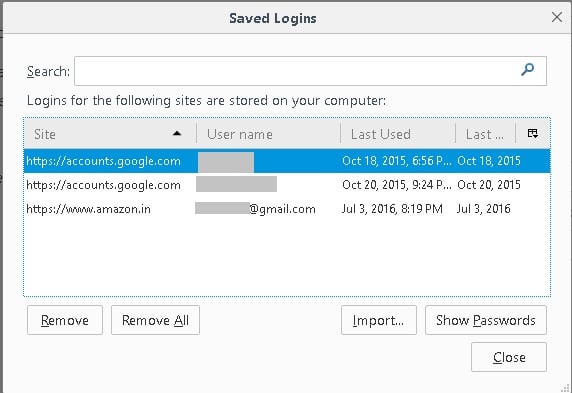Web browsers are one of the most actively used applications in our computers. Many web browsers are available in the market. But only a few have managed to attract the users with their best user interface designs, add-ons, and security features. Everyday web browser developers try hard to add new features or update the existing features. Autosave password is one of the features offered by web browsers to remember your credentials when you enter the user account name and password for the first time in your browser. Once the browser saves your credentials, then you can auto-fill the credentials when you visit the same site next time. Luckily, it is easy to view saved passwords in Internet Explorer, Google Chrome and other web browsers like Firefox.
Autosave feature is one of the time-saving features for the users who access different accounts across multiple sites with different passwords. You might feel that it might not be secure as you are entering your credentials and it can be misused. You don’t need to fear about that because these credentials are stored in your local system. Also, if you forget the password or username of any of the accounts, you can get them from the locally saved copy on your browser.
Let’s see how we can find the autosaved password in different browsers like Internet Explorer, Firefox, and Google Chrome.
View Saved Passwords in Internet Explorer
Internet Explorer is the default web browser in the Windows operating system. To view the autosaved passwords in Internet Explorer browser follow the below steps:
- Click on the Start button or press the Windows key on the keyboard to launch the Start menu.
- Click on the Control Panel and select icon view.
- Click on the Credential Manager icon and select Web credentials.
- Expand the listed websites and click on the password to view the autosaved password.
If you prefer the Microsoft Edge browser over Internet Explorer, don’t forget to check our guide describing the steps to disable Internet Explorer.
View Saved Passwords Google Chrome
Google Chrome is one of the leading web browsers with many enhanced security features. To view the saved passwords in Google Chrome browser follow the below steps:
- Click on the control panel button (indicated by 3 horizontal lines on the top right side of the Chrome browser).
- Click on Settings > Show advanced settings…
- Scroll down until you find Passwords and forms and click on Manage Passwords.
- You can now see the list of passwords saved along with the username and the website.
- Select the account and click on the show button to view the password.
The above quick tips to view saved passwords in Chrome should have served your purpose. To learn more about creating, editing and managing browser passwords, please read our detailed guide on using Google Password Manager.
Find Saved Passwords in Mozilla Firefox
Mozilla Firefox is also one of the leading web browsers after Google Chrome. To view the autosaved passwords in Mozilla Firefox browser follow the below steps:
- Click on the Firefox control panel button on the top right corner of the web browser.
- Click on the Options and select the Security option.
- Click on Saved Logins and then on Show Passwords.
- Now click on the last changed column of the respective account to view the password.
You can also manage trackers in Firefox using the new tracking protection feature.
That’s it. Autosave password is the time-saving feature because you don’t need to reset the account password every time you forget it.
If you find this tutorial useful, do share it with your friends. Let us know your suggestions in the below comments section.
Read Next: Pin Websites to Windows Taskbar (Edge/Chrome/Firefox)








